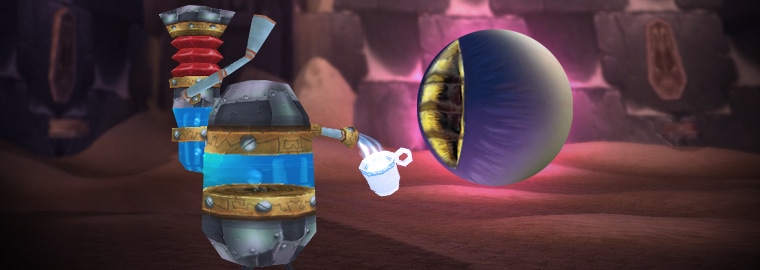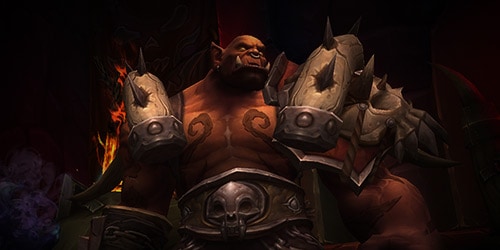Over the course of WoW’s nearly 10-year history, raiding has probably undergone more iteration and change than any other game system. To put the upcoming Warlords of Draenor raid changes into proper context, this three-part blog series will attempt to retrace the twists and turns of our raid design philosophy from Molten Core through Siege of Orgrimmar.
We continue the series by taking a look at raiding today, beginning with Cataclysm through Mists of Pandaria. If you missed Part 1, you can read it here.
Cataclysm (2010-2012)

After the rapid iteration on raid systems over the course of Wrath of the Lich King’s content updates, we approached Cataclysm aiming to wrap those designs into a more streamlined package. There were two major concerns that we wanted to address:
- 10-player raiding had grown very popular due to its accessibility, but we were increasingly hearing from many of those raiders that they felt like they didn’t have the opportunity to prove themselves on the hardest content or earn the best gear in the game.
- Players often felt obligated to run both 10-player and 25-player modes of the same content each week in order to optimize their character, which could accelerate burnout. (Best-in-slot trinkets and other items on the unique 10-player loot tables didn’t help here.)
Guided by these concerns, we decided to consolidate 10-player and 25-player modes into a single difficulty, single reward tier, and single raid lockout. So in Cataclysm, we allowed raiders to choose their preferred raid size and experience the content as they saw fit.
While we were motivated by good intentions, these changes had some unfortunate side effects. . . .
- The need for equal difficulty between the two modes meant that when we encountered organic imbalances (e.g. spreading out requires more coordination with more players in the same space), no longer could we err on the side of just letting 10-player be easier. We had to try to adjust numbers or other mechanics to offset the disparity, and that was a challenging problem that we lacked prior experience in solving, especially when tuning cutting-edge Heroic content. As a result, there were many differences between the two modes, particularly early in the expansion.
- Unifying the difficulty of the two modes mainly involved increasing the difficulty of 10-player mode. This left many players who had enjoyed success in 10-player Normal Icecrown Citadel feeling unable to get any sort of foothold in Cataclysm raiding.
- While in theory players could now choose their preferred mode of raiding, in reality equalizing rewards encouraged a persistent downward pressure on raid size: Growing from 10 to 25 was nearly impossible logistically, whereas challenging bosses or attendance woes continually tempted 25-player raids to downsize and just keep going with their 10 “best” players. Previously these temptations were offset by the fact that switching to 10-player mode yielded weaker loot and different achievements, but the Cataclysm changes removed that countervailing motivation.
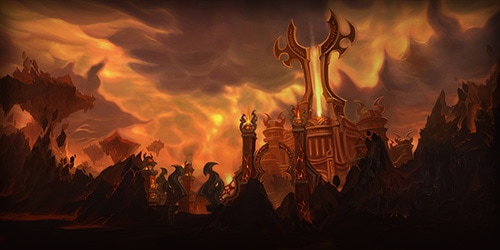
We got better at balancing the two modes over the course of the expansion, but the social consequences of the change continued to reverberate. In particular, raiding had become inaccessible to players who previously had enjoyed playing with their friends or pickup groups, and that was a problem.
Patch 4.3: Raid Finder
Just as Dungeon Finder opened dungeons up to a far wider audience by removing the logistical barriers to finding groups for them, our new Raid Finder held the same promise for raiding. Whereas finding a pickup group even on an active realm required a large contiguous block of time and a fair bit of patience, Raid Finder allowed players to jump right in and experience raid content on their own time and according to their own schedules. The feature was tremendously popular, and it allowed more players than ever before to experience the conclusion of an expansion’s major story arc, as millions of players defeated Deathwing, compared to the thousands that had defeated Kel’thuzad back in 2006.
We learned a lot from Dragon Soul about how to design content for Raid Finder. We endeavored to preserve encounter mechanics where possible, but had to significantly adjust unforgiving abilities—especially those that allowed a single player’s mistake to result in the entire group’s failure. In traditional organized raiding, a group of players generally learns from mistakes and masters content together, and they bring that collective knowledge with them in subsequent weeks. In Raid Finder, which put players in random groups each week, there was a clean slate with regard to mastery of the encounters. Having to essentially redo progression each week is few players’ idea of fun, so we had to significantly accelerate the Raid Finder learning curve.
Mists of Pandaria (2012-2014)
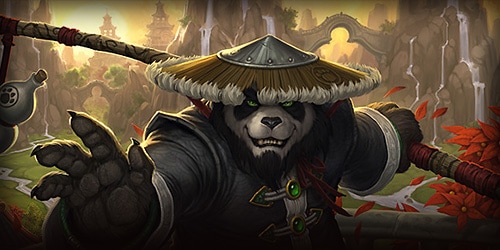
Going into Mists of Pandaria (Mists), we made fewer changes to our raid structure than in any prior expansion. Other than some improved handling of loot for Raid Finder (replacing traditional Need/Greed with personal loot), Mists raiding at launch followed the exact same structure as raiding in Patch 4.3: Dragon Soul. In retrospect, the lack of change actually reflects another miscalculation on our part.
We knew that the Cataclysm changes had effectively removed a difficulty level from our game by raising the challenge of 10-player Normal to match 25-player, and that this change had left a group of players without suitable raid content. By adding Raid Finder, we had returned to three effective difficulties, and given the popularity of the feature, we assumed that this largely solved the problem. We were mistaken.
Raid Difficulty and Raid Groups—An Aside
In broad strokes, there are three distinct types of groups that participate in organized raiding:
- Friends and Family groups: These are social groups that exist for reasons besides raiding, but whose players would like to venture into raid content together. This type of group is inherently inclusive, and will not organize its roster according to specific class needs, nor is the group likely to criticize or remove players based on performance. Members of this type of group prioritize playing together.
- Raiding guilds: These are groups that have formed for the purpose of raiding. These are the majority of guilds that you’ll see recruiting in Trade chat or on realm forums. These groups will generally look for specific classes based on roster needs, and will expect a certain level of attendance or performance. Members of this type of group prioritize experiencing and learning the content.
- Hardcore raiding guilds: An extreme subset of the previous category, these are the guilds of players whose ethos drives them to be the best at games they play, and who are willing to dedicate time and energy to maximize their results. Guilds of this type will recruit and maintain a roster based primarily on performance, and will expect raiders to optimize their characters. Members of this type of group prioritize competition and success.
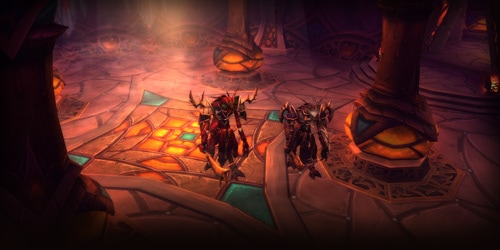
At the start of Mists, Normal modes appealed solidly to raiding guilds, and Heroic difficulty provided a worthy challenge to the hardcore guilds. However, friends-and-family groups—which had once thrived in Karazhan and in 10-player Normal raiding in Wrath—were left without much satisfying content. They made some headway in the new raids, but often got stuck at Elegon (Mogu’shan Vaults) or Garalon (Heart of Fear) without any clear way forward. Running Raid Finder could have helped them get better gear to overcome these challenges, but that often simply wasn’t enjoyable. For the player who just wants to play with his or her friends in a tight-knit environment, solo-queuing was not a satisfying experience; even queuing for Raid Finder as a group wasn’t much better, since the presence of a dozen or more strangers transformed the nature of the activity. Besides, Raid Finder was tuned for randomly matched groups and generally lacked sufficient challenge for even the most casual of organized raid groups.
We realized that we were doing a poor job of serving this important segment of our player community. Raid Finder, it turned out, was great for players who had no interest or ability to participate in organized raiding at scheduled times, but for friends-and-family groups, it was not an adequate substitute for the old 10-player Normal difficulty that went away in Cataclysm.
For the Siege of Orgrimmar, we introduced a new raiding mode that was designed primarily to solve this problem: Flexible Raid mode was tuned to be roughly 20% to 25% easier (numerically speaking) than Normal mode, while preserving all of the fight mechanics, but more importantly, it also made use of a new scaling system to allow the content to adapt to any raid size between 10 and 25 players. For players whose priority is just being able to raid with their friends, why force someone to have exactly 9 or 24 friends? Why limit which friends they can play with to those on the same realm? We made Flexible Raids have their own lockout, and we allowed players to kill the same boss multiple times per week—but only loot it once. In general, our aim was to remove as many obstacles as possible that might get in the way of friends who just want to be able to raid together in WoW. (And for those who are wondering, “Then why not allow cross-faction raiding? Why not let me raid with my Alliance friends even if I play Undead?” Fundamentally, Alliance vs. Horde, Orcs vs. Humans, is the heart and soul of the Warcraft universe—we have to draw the line somewhere, and we draw it there.)
We’re tremendously happy with how players have received the new Flexible Raid mode, and we wish we’d implemented something like this sooner. We’re now back to three tiers of difficulty that cover all of the different kinds of organized raiders, while preserving Raid Finder for those who just want to experience the content on their own schedule.
In Part 3, we’ll take a look at the future of raiding in Warlords of Draenor.



